By Ian LongAll writers fear rejection.
But it's an unavoidable part of the writing process - a side-effect of putting your work out there. Even so, it doesn't feel good. We need to find ways to soften its psychological and emotional impacts, and prevent it from affecting us and our work. And maybe we can even find something useful in it. This article suggests some coping strategies. 1. There are different kinds of rejection. In fact, the word itself is a bit of a misnomer. “Rejection” is really just the information that a particular producer or publisher can’t realise a certain film or book at a specific time. And there could be many reasons for this. ACTION PLAN: Get analytical. It’s important to be detached when dealing with bad news, not to let your emotions dominate, and to work out just what's happening in the situation you're dealing with. 2. You aren’t your work. No matter how much time, effort and emotion you’ve poured into that pile of A4, it isn’t actually you. You are a human being, hopefully quite functional, with friends, family and a future that isn’t entirely bound up with a single manuscript. ACTION PLAN: Remember that in a short time you’ll be working on a new, possibly better idea, and this current story won’t be as central to your self-image as it is now. 3. Unnecessary fears? If someone’s commissioned a script from you, they’re unlikely to reject it. Even if they feel your draft isn’t quite there, they’ll want to work with you to improve it. Worst-case scenario: if they have real problems, they may ask you to do an unpaid draft to get it back in shape. ACTION PLAN: Don’t waste energy worrying about something that’s unlikely to happen. 4. Shooting yourself in the foot. Did you research the destination of your script or novel in detail? Or maybe you posted your romcom to a production company that only makes horror films? Perhaps you sent a script to a company which doesn’t accept unsolicited work? If so, you’ve effectively rejected yourself. ACTION PLAN: Make sure you send your work where it has a chance of being appreciated. If the company your're targeting doesn’t read unsolicited material, ask a contact to recommend you, OR try to meet or otherwise contact an insider - and pitch your idea to them. If they're interested, the script is no longer unsolicited. 5. “We can’t make this, but …” Production companies and publishers have to assess projects from many angles. Creativity is important, but so are financial considerations - particularly in cinema. Many livelihoods hang on the success or failure of a film, and every screenplay is essentially a proposal to set up a medium-sized business. So some rejections aren’t really rejections at all. Maybe the small company you're dealing with really would love to make your biblical epic, and really does like the way you've rewritten the Sermon on the Mount, but just doesn't have the funds to produce it. ACTION PLAN: Start by assuming that most replies will be negative. But look at them carefully. Does the response contain positive comments about your story, or your writing? There’s no reason for a producer to sugar the pill, so if they say it, they probably mean it! Don’t mistake a reponse that endorses your abilities for a blanket rejection. It could be the start of a conversation which will lead to future collaborations. 6. Learn from constructive criticism Equally, be prepared to take criticism on the chin. If someone's taken the time to think about your writing and assess it honestly, they deserve thanks. Decide whether the points they make are accurate, or useful. They may contain valuable clues to improve your work. ACTION PLAN: Give yourself time to think through criticisms of your work. There may be nuggets of gold in them, even if you feel a little stung at first. And don’t get bitter about people who critique your work, or go around denouncing them. As with the instance above, they may also turn out to be future colleagues. 7. Downright nastiness I’ve said you shouldn’t bad-mouth people, but there are a few people out there who will unload a ton of vitriol on you for no apparent reason. Don’t take it personally. If they do it to you, they'll almost certainly be doing it to others. Personal attacks are unacceptable, and they reflect on the perpetrator, not the recipient. Maybe the individual in question is facing some profound problem in life, maybe they were having a bad day - or maybe they're simply a deeply unpleasant person. ACTION PLAN: Have a really good day, just to spite them! If you have any other ideas about dealing with rejection, please add them in the Comments section. MY UPCOMING WORKSHOPS Both these workshops aim to help writers avoid rejection by making their work as good as it can possibly be! DEEP NARRATIVE DESIGN - June 12th For writers in all genres - how to design stories which communicate the ideas and emotions you intend in the most effective ways. For more details about Deep Narrative Design, click here. WRITING HORROR - July 12th Work through the many possibilities offered by horror to create cinematic stories with powerful personal, emotional, social and political themes. For more details about Writing Horror, click here.
0 Comments
Long gone are the days where cat videos were the sole rulers of the internet. Today, modern audiences are hungry for compelling dramas and original fictions easily accessible from any device. Within this context, web series have flourished in the past few years. So what's the key to writing a successful web series that will make you stand out from the crowd? Let's take a look at the first indie web series ever nominated for an Emmy award, Her Story to find out the answer. 1. Keep it short and sweet Simplicity is crucial with web series. Online audiences expect to watch episodes that are generally around 10 minutes long max. As such, web series often have a cast of 3-5 characters maximum evolving within one location. Her Story, for example, has two main characters, Violet and Paige and takes places in the urban environment of Los Angeles. Overall, each episode is around 8 minutes long and the whole series includes 6 episodes. 2. Catch them with a hook It is a fact that all online audiences have short attention spans. As such, your story should have a hook to grab their attention within the first 10-15 seconds. Ideally, the perfect hook will introduce the theme, premise, and main characters of your story. The premise of Her Story focuses on two queer and transgender women and their life and love experiences in LA. The series introduces these characters and themes very well within a super short time span. In the first 15 seconds, we meet transgender waitress Violet, in a bar where one of the customers discusses a journalistic piece on transgender women. 3. Start in the middle One thing that writing web series will teach you is to cut all forms of exposition. There's simply no time for it. The best way to do this is to start your story anywhere, except at the beginning. The opening scene of Her Story does this by starting in a bar where we meet the main characters without any previous introduction into their lives. This also works well as part of the hook as it raises many questions that will motivate the audience to keep watching. Interested in finding out more about web series? My next workshop on Apr. 12th will explore the narrative structure and genre in depth. Through practical exercises, you will also have the opportunity to develop your own web series idea. Find out more... Written by Alizée Musson *Image credit: screenshots from the web series Her Story Article by Ian Long You don't need me to tell what the world's like these days. But here’s a short reminder of the current state of affairs:
Q: BUT HOW CAN WE TURN THESE ISSUES INTO FICTION? A: They have something in common: human perversity and reversals of intention. Many of the things listed above have a perverse aspect, in which things morph into their opposite ...
This perverse streak is part of the genre description of Neo Noir, which you can explore in depth at our workshop on August 31. Updating the tropes and conventions of classic Film Noir, the genre provides a tool-box of plots, characters and situations to deal creatively with our self-destructive tendencies. Neo Noir protagonists often don’t really need antagonists – they do the job so well themselves. In the workshop, we'll:
For more information and to book, click here. Attend our next speakeasy
Article and image by Ian Long “Let’s start on page one, shall we? Now, listen …” The mood of the generally affable Paul Viragh, screenwriter of BRAZZA, SEX & DRUGS & ROCK N ROLL, THE FACE OF AN ANGEL and others, darkens a little when he remembers a meeting with a Script Executive who proceeded to read choice bits of dialogue from his screenplay in an affected, sing-song voice, and went on to preface each of his comments with the phrase: “Now, if I’d have written this …” The topic of the evening was script feedback - where to get it, how to take it, how to use it, and how to give it. And this is definitely not how to give it. Early days Paul has come a long way since this incident, and since the evening, long ago, when he and good pal Andy Serkis, both struggling actors trying to make headway in the film business, met up in Soho’s Blue Posts pub to plan their next move – and were so short of money that they had to share a pint. In fact he’s come as far as Fitzrovia’s Wheatsheaf pub, on the other side of Oxford Street, where he was the guest for our first Speakeasy event. We’re hosting these night on the first Tuesday of every month: informal chats with writers, directors, agents and anyone else who might be of special interest to screenwriters. Paul looks back to those early days, when he and a number of his actor friends were trying out other roles to give them more purchase in the industry, with mixed feelings. “We were all looking for some kind of validation,” he says, “and that was a long time coming.” Fathers and sons Paul wrote SEX & DRUGS & ROCK N ROLL on spec – “no one pays you for your first script” – and admits that he was more intrigued by the character of Ian Dury (charismatic and talented, but a tyrannical monster of ego), than by his music. And, for Paul, the real topic of the film was the relationship between Dury and his son. Both Viragh and Serkis (who played Dury brilliantly) knew how it felt to have an absent father, and some scenes were lifted directly from their own lives rather than Dury’s. “You’ve got to write a human being,” Viragh says, and it’s clear that for him achieving emotional truth is more important than the niceties of biography. Looking for funding Many of the studio executives he approached for funding demurred with the tired fob-off that Dury was “an unsympathetic character” (Viragh notes that DOWNFALL, the massively successful, multi award-winning biopic of Adolf Hitler, had just been released when he was having these meetings). Once he’d secured a large tranche of funding from one source, though, previously timid investors decided that unsympathetic characters may, after all, have a certain appeal – proving that the herd instinct is alive and well in the film business. “Why don’t you make something up?” Paul says his daughter often asks him this question, complaining that his scripts tend to be true life stories rather than free flights of fancy. He reminds us that a very high percentage of released films are, in fact, biopics – or are based on books. Telling the life of a real person (particularly one who is well-known) gives you a head start in terms of recognition value. And – to return to the subject of bad advice – writing about real people protects you from script editors and executives whose notes about your protagonist go along the lines of: "What if she was a man?” Want to meet other writers and hear industry advice from pros? Attend this month's speakeasy on Feb. 26th Monsters are central to Horror, so ahead of our Writing Horror workshop on February 23, let’s look at the positive values they can have for both writers and audiences By Ian Long A boy and his monsters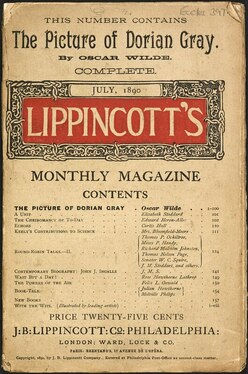 In almost every interview he gives, Guillermo del Toro revisits his outcast, hypersensitive Mexican childhood as a “thin, almost albino” boy, his domineering, disapproving grandmother, and the defiant affinity that he developed with monsters as a result. It’s his touchstone and founding myth. Monsters opened up a zone where the lonely, bullied future director could find comfort. For young Guillermo, they weren't scary, but strangely benign and nurturing. They acted as guardians of his private world. Immersing himself in the darkness of horror films and Victorian Gothic (like Tim Burton in sunny Burbank), he felt surrounded by powerful imaginary friends who terrified and repelled everyone else, but made him feel stronger - and, perhaps, an initiate into secret worlds and arcane knowledge. The director says he also deliberately over-ate to put on weight (something that would later cause health issues), consciously changing his body into something bigger and more intimidating – in his mind, something “monstrous”. How can writers use monsters?Del Toro’s story suggests that, rather than being one-dimensional figures, monsters can have depth and nuance, embodying positive aspects as well as threats. Which can make for complex, intriguing, dramatic stories. As writers, we can blur or eradicate the line between heroes and monsters. We can use them to raise deep questions about human psychology, and show how “ordinary people” strike bargains with them, for various reasons - perhaps themselves becoming monstrous in the process. And as we’ve seen with del Toro’s own health problems, dealing with monsters also has its costs – which is also inherently dramatic. This is something that the creators of shows like BEING HUMAN, DEXTER, HANNIBAL, TRUE DETECTIVE and PENNY DREADFUL have recognised. Penny DreadfulAll these shows have great strengths, but Penny Dreadful may be the richest of them. Its creator, John Logan, consciously shaped it as a primer of ideas about monsters and monstrousness, which he used to think the subject through from just about every angle. Like del Toro’s tales, Penny Dreadful is inspired by Victorian Gothic, and its lead characters are a kind of incestuous, dysfunctional family. Sir Malcolm Murray is the obsessed, driven father-figure. Vanessa Ives, Ethan Chandler and Victor Frankenstein are his wild children. And as we know, Victor also has a "child" of his own: interestingly, both he and the Creature use the epithet “demon” to refer to each other. As Vanessa asks the flamboyantly amoral Dorian Gray: “To be alien, to be disenfranchised from those around you, is that not a terrible curse?” “To be different, to be powerful – is that not a divine gift?” Dorian suavely replies. It's a story about outcasts who find a common cause. But the things that keep them together are fragile and constantly under threat. Sex and monstersQ: But where did Logan’s interest in monsters come from? A: It’s all about sex. “I've always been drawn to monsters,” Logan says. “As I grew older, I realised what really attracted me to them was … to do with growing up as a gay man.” The teenage Logan saw the gay area of New York as “a forbidden, sexy, scary place”. Although he quickly realised that this is was where he belonged, "to step through that door would mark me as different from my brother, my family, my schoolfriends.” “The thing that made me alien and different and monstrous to some people is also the thing that empowered me and gave me a sense of confidence and uniqueness and a drive toward individuality that I think is important for any writer." It's something that also figures in Hellraiser creator Clive Barker's relationship with writing - to name just one other example. John Logan goes on to say: "Until I grappled with and accepted the reality of who and what I was – which many people would consider monstrous – I couldn't be the artist or the man that I am.” Monsters and audiencesI've talked a lot about writers' potentially positive relationship with monsters. Does it seem likely, though, that audiences - the fine, decent, upstanding bulk of the population - would feel any affinity with creatures that overturn ideas of normality? However - difference isn’t just felt by gay people, writers, or thin, almost albino boys. The brutal fact is that we all share this experience at some stage in our lives. And we all have transgressive, antisocial drives that we may not want to enact, but which we need to acknowledge at some level. Monsters can help us do this. Why else would people feel so intrigued by the Child Catcher, Freddie Kruger or Hannibal Lecter? And why else would all the films and TV shows I've mentioned be so popular? Exploring difference in this way can bring you closer to audiences, not further away from them. Lessons from Logan and del ToroBy its nature, being a writer is an outsider’s occupation – and, as we've seen, monsters are a great metaphor for this.
But how can you find your own relationship with monsters and the monstrous? Here are a few points to ponder. You will probably think of others.
Find out much more about writing horror at our all-day workshop on February 23 By Stéphanie JoallandWe all have big ideas and we want to make big movies and would like to go from WHIPLASH to FIRST MAN in a few short years like Damien Chazelle. But the reality is Chazelle is very much the exception to the rule and many writers get burnt out as they struggle to get their scripts produced in spite of winning top competitions and getting their work optioned. That doesn't mean you shouldn't write big projects and reach for the stars, just that it wouldn't hurt to have small films that you know can get made. That's when micro-budget films come into play. Admittedly what qualifies as “micro-budget” is a little fuzzy (see what Steven Follows has to say on the topic) but the bottom line is they are movies made with money you can realistically secure under your present circumstances. Micro-budget films aren't just for writer-directors. Producers are craving scripts they could produce well on a small budget. The lower the budget the easier it is to recoup the cost, which is more appealing for them. Although micro-budget scripts present clear advantages in terms of feasibility it's often challenging for directors and producers to find scripts that can be truly made on a low-budget – let alone a micro-budget – so it seems that a lot of screenwriters are unaware of the reality of turning their vision into a film. So, the tips below would be a good place to start to remedy the situation: 1. Think like a producer...Write with a producer's cap on even if you aren't planning on producing yourself. Is it a story that could really be made on a budget without massive compromises that would be detrimental to the story? Not all projects should be made on a micro-budget. So give your script an honest reality check and if you aren't savvy about production talk to filmmakers and take stock of the requirements of your project. While the budget of your micro-budget script can always balloon like the DISAPPEARANCE OF ALICE CREED or BURIED you can't always scale back your high-concept project so it's always a good idea to set strict parameters at the outset so that you can make the creative limitations work to your advantage taking into account all the resources you have at your disposal (including what you can access at your day job for example!). 2. Ensure it's a script you are passionate about...It's not because you can shoot a script on an I-Phone over two weeks that you should do it. Regardless of the budget between the production process and the festival run, it's going to be one or two years of your life you won't get back. The process of making a feature film is incredibly involving so make so make sure you believe in your project. Of course if you aren't planning on producing and directing yourself that's less of concern but let's face it, in the micro-budget world chances are you are a bit of an hybrid between an entrepreneur and an artist (and if you aren't it's time to become one). 3. It's okay to think big...Movies like COHERENCE which was shot over five nights and explore big ideas in a compact format are gold dust as they transcend the limitations of low-budget filmmaking and take full advantage of the fact they have creative control and can experiment with bold ideas. 4. It's not because you can shoot your script cheaply that you should overlook the development process...Movies with 2, 3 main characters are incredibly hard to write. Many of the breakthrough micro to low-budget films out there are the product of years spent in development. Small gems like A GIRL WALKS ALONE AT NIGHT and BLUE RUIN don't emerge fully baked, their auteurs spent years crafting their scripts and it shows. 5. Make each character count...The fewer the better. The fewer characters you have, the more screen time they have and the better you can develop them and actors love the opportunity to have a great character to sink their teeth into. Use the hyper-connected world to your advantage to be able to add more characters without having to bring them on set. There is so much you can do with a phone like in Chris Sparling's BURIED and modern technology can offer cheap solutions to tell your stories. Look at the clever use of technology in the Danish Oscar entry THE GUILTY co-written by Gustav Möller and Emil Nygaard Albertsen who manage to keep their audience on the edge of their seat with a policeman in a call center, a phone and computer screens. 6. Contained locations but you can still move around...The fewer locations the better of course so the first examples of contained movies that cross your mind might be TAPE and EXAM and the aforementioned BURIED which manages to squeeze actual action pieces in a coffin. But it's not because you are making a micro-budget film that you should necessarily contain your story to ONE location. Ask yourself what locations you have at your disposal and write around them, WEEK-END being a good example of that, or LOCKE where the character is stuck in a moving car throughout the whole film which makes the whole experience cinematic. Just avoid locations you don't have full control over. 7. Keep it short anD SWEET...I read a lot of micro-budget scripts which are 110 pages, which means the directors will often end up shooting ten pages per day if they only have ten days to shoot. So I recommend you edit the hell out of your script and be ruthless with it. Aim for 90 pages maximum. 8. Don't assume that because you don't have money it should be all talk-talk-talk...There are so many ways of making things visual on a budget and keep the characters moving. Making a micro-budget film doesn't necessarily mean you have to film a stage play. Look at BLUE RUIN and its incredible visual opening. It's not because you are making a micro-budget film that you should strip away all your great locations and shot ideas that can elevate your piece. 9. Understand your industry context and the marketplace...Be clear at the outset about your goal. Are you writing your film for yourself, the festival circuit, the commercial circuit or both and be realistic and knowledgeable about the prospects of a small movie in today's indie landscape. Study similar films (“comparables”). Again, even if you aren't a producer it wouldn't hurt to have clarity about the marketplace while boldly embracing the fact you can take a risk with your story or cast that you wouldn't be able to take when more people are investing in your film and want to have a say in the creative process. Show us a white-sheeted ghost wandering in a house if you please like in A GHOST STORY. 10. Beware of SFX and VFX...If you as a writer/director or your director are a specialist in VFX then fine, you can write a story in the vein of MONSTERS but if you are not, just know you are in for a steep learning curve so refrain from relying on VFX and what will happen in post-production. Embrace your limitations in a creative way and plan ahead like Mike Cahill who spent a long time carefully designing the otherworldly visuals of ANOTHER EARTH before going to camera.
It's just a starting point of course but a good place to start to make the most out of your minuscule budget. By Ian LongSometimes films or TV series work towards an unusually powerful scene or sequence which burns itself onto the memory of the viewer. This is much more than a mere “twist” (often a disappointingly trite or unearned plot turn), but something which plays really profoundly on viewers’ perceptions and emotions, touching them in ways they may not entirely understand. Q: But how do we achieve this effect? A: By being aware of how to use information in a story, and making and breaking patterns of ideas in the minds of audiences. My Deep Narrative Design workshop sets out many ways in which you can create powerful stories using these methods. For now, though, let’s look at a great example of making and breaking patterns in the first season of HBO’s TRUE DETECTIVE. Spoiler Alert: this item reveals one particularly surprising moment of the story, although the season has many other intriguing character and plot elements. The Characters The story features Louisiana State Police homicide detectives Rustin “Rust” Cohle (Matthew McConaughey) and Martin “Marty” Hart (Woody Harrelson). The two men embody contradictory sides of the standard “hard-boiled” detective – aspects which are usually contained in a single protagonist. Hart is an unreflective man of action, all fists and fiery passion, while Cohle is a sort of nihilist philosopher-cum-policeman - detached, despairing, unfathomable. Both share an overarching sense of alienation, of being at odds with life. The Structure As well as twin protagonists, True Detective has an unusual dual-timeline structure. In the story’s “present”, 2012, the two detectives are interrogated about a case they worked on some twenty years earlier. As we move between the past and present, finding out about the case and seeing how time has changed the men, we learn why they’re being questioned: one of them is suspected of involvement in a recent murder related to the past case. The Joys of Voiceover As in many noir-inflected stories (SUNSET BOULEVARD, MEMENTO, DEXTER, etc), voiceover isn’t just an add-on here: it’s a vital part of the story’s design. The narrative just wouldn’t work without this way of putting us inside characters’ minds. Patterns and Rules Series creator Nic Pizzolatto set out clear ground rules for the story in his treatment, including this: “The narrating voice may lie, but the images we see never will. So an audience can be sure they know exactly what happened, and also that they can tell when one of the detectives is lying.” The Unforgettable Sequence For much of the season, Cohle and Hart's spoken testimony squares with what we're seeing onscreen. But in “The Secret Fate Of All Life,” the fifth of the season’s eight episodes, this pattern is broken. The duo track a suspect to a meth lab hidden deep in the bayou. Finding two kidnapped and abused children in the compound, Hart is incensed and unnecessarily kills the suspect, who he’s already taken into custody. But the voiceover we hear from the men as we watch these events tells an entirely different story. As Hart and Cohle tell us that they came under intense fire and were obliged to retaliate, the scene that we see is quiet and tranquil. And then we watch as the men fake evidence of a desperate shootout which never happened. They’re subsequently decorated and promoted for their heroism. But they've become conspirators in covering up a murder. It’s a lie on which the rest of their lives will be founded. The Emotional Impact I vividly remember the sense of unreality I experienced when watching this scene: a feeling which drew its power purely from the way in which information was “coded” in the story. With it went feelings of bafflement, almost betrayal, as the visual information I was receiving departed so far from the characters’ verbal descriptions. It’s these moments of thrilling strangeness – when viewers feel cut adrift and experience something genuinely new and compelling – that we need to look for in our stories, and which makes them truly memorable. And when reading scripts, these are the moments that producers and directors are searching for. The brilliant title sequence which includes the images in this article were made by Elastic, and you can find out more about the ideas behind the sequence here. For more details and to book on my Deep Narrative Design workshop, click here. Thank you for reading, and please let me know of any thoughts or comments. As usual, we at Euroscript are taking our Script Surgery to the London Screenwriters’ Festival in September.
Our doctors will be meeting a host of writers and giving them in-depth, one-to-one help with their projects. Lots of writers say their appointments with us are the highlight of their LSF. So we’re ready – but are you? We say it every year, but it’s crucial to have your projects in the best possible shape before you pitch them to the producers, financiers, distributors and other movers and shakers you’re going to meet at LSF. You need a finished script. And you need it to be excellent. The good news There’s still time to get the best feedback in the business from LSF’s most trusted screenplay development organisation – in other words, us. We’ll give you the quality consultancy you’ll get at the Festival before you go – so you can relax when you’re there, knowing your story is as good as it can be, and you can hand it out with confidence. More good news The help we give at LSF is available all year round via Skype calls, meetings and written reports. So you can get that vital feedback you need whenever you need it. Click here to see our range of feedback services and to book! By Ian LongHorror offers writers and directors ways to make cinema that's vibrant, powerful and entertaining.
My Writing Horror Now workshop on July 12 aims to refresh the ideas of people who already love the genre - and to help newcomers see its many possibilities. So, to lure you in, here are 6 reasons why you should be writing Horror. 1. The Creative Challenge Horror is an extremely malleable genre which gives writers the chance to reform the world and its possibilities at will. It also blends in interesting ways with other genres. Think of David Cronenberg’s comment that his film THE BROOD (1979) was a more truthful account of a marriage break-up than Robert Benton's KRAMER VS KRAMER, released in the same year. The workshop will look at ways of making new stories from this “blending” process. Take up Horror's creative challenges and give your imagination free rein! 2. Politics, Society, Religion, Sexuality Are you deeply concerned about any of these issues? Do you want to comment on them in ways that will reach large audiences and start debates? The genre’s visceral, unbound quality lets you talk about social and political ideas in ways that are devastating and memorable. Think of recent films like GET OUT and UNDER THE SHADOW. Or older ones like CARRIE, the TEXAS CHAINSAW MASSACRE and JAWS. All of them had intriguing depths and important things to say about the way we're living. Horror cuts to the chase, dealing with deep, primal issues that other genres skate around. 3. Visual and cinematic qualities Horror intensifies stories which might otherwise lack cinematic interest, opening up visual possibilities, heightening emotions, increasing stakes. In other genres, a problem may be talked about, or acted out. In Horror, it’s embodied … by a 'monster'. And it’s up to you how that monster looks, acts and sounds. 4. Popularity with audiences (and critics) Did you know that Horror is the most profitable film genre? Producers are always looking for good, original Horror scripts. And many popular TV shows (DEXTER, HANNIBAL, BEING HUMAN, etc) have strong horror aspects. Lots of the movies that “break out” of their home territories and achieve international success are in the Horror genre (TROLLHUNTER, LET THE RIGHT ONE IN, THE ORPHANAGE). And when the films are good, the critics will also come on board; all these films were very well reviewed. 5. A Great Tradition Horror has no lack of cultural or intellectual credibility. Many great writers have contributed to the genre – from Daphne du Maurier, Susan Hill and Hilary Mantel to Charles Dickens, Franz Kafka and Honoré de Balzac (not forgetting Mary Shelley). Join this gilded roll-call with your own contributions! 6. Horror isn’t polite At times when cultural mores become a little rigid, some outlet is necessary for us to say the unsayable, and to give vent to the dark things that underlie our psychology and culture. Horror is always going to provide these opportunities (humour does something similar - and there's a strange bond between these seemingly very different genres). Use Horror to indulge your inner punk-rocker, to be provocative, and to experiment with divergent ideas. Audiences will love you for it. For more information on the workshop, and to book, click here. 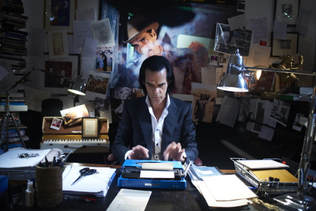 By Charles Harris Your script is complete. Everything works - but there is one more thing that you absolutely must deal with before you send it out. If you've been following this series of blogs from the start, you've taken your idea from first spark to final draft, step by step, and learned a great deal about your story along the way. You've honed the premise until it had that spark that lit up when you pitched it. You developed it into an outline that worked, with an intriguing beginning, a dynamic middle and a surprising yet satisfying end. You've created a first draft that was a mess, but contained a few hidden gems. You edited for structure, character, scene dynamics, dialogue and description until the whole screenplay worked from fade up to fade out. In the previous draft, you faced up to the "X Factor" - the one thing (perhaps more than one thing) you've been putting off dealing with. One more thing... It's done and ready to send out. Yes? Not quite. Because you only get one chance to sell your script to any one buyer. And if there's an obvious flaw that you've missed, then you've blown it. Before you send it out, you need feedback. So far you've been doing this all on your own. You've been writing - to quote Stephen King - "with the study door closed." Now it's time to open up. Screenwriting is a collaborative art, and no script has ever succeeded without feedback. Now is the time to get it. If you thought the previous steps were scary, this will be the scariest yet. Nobody likes getting feedback. The only thing worse than negative feedback is no feedback! We all want to believe our writing is brilliant and unimprovable. And we're all wrong. Even the greatest novelists have editors. The greatest playwrights listen to their actors and directors. Better that you know the problems now, before you've tried to sell the script, than after, when it's too late. But listening to feedback is an art in itself. Not every response is right. Not every suggestion should be followed. How do you know which to listen to and which to ignore? First, take the process step by step. Before you send off for a report, tidy the draft. Check carefully for typos and spelling mistakes. Put it in the right format - this is crucial (if you aren't sure about screenplay format, I've written a simple guide and a couple of templates that you can download for free here). Check also for inconsistencies (such as characters whose names change) and factual errors (Dr Google is a great help here). Then , If you've never had feedback before, begin slowly. Start with a couple of friends, who will (hopefully) let you down lightly. What do you want to know? If they've never read a screenplay before, you may have to give them some guidance. Suggest they imagine their favourite actors in the roles. Ask them to be constructive (not "this sucks" but "here's a place you could improve!") I also like to give them some questions to think about, such as "Pause at page 10. What do you think is about to happen? What do you think of Josie? Do you care about her?" Etc. Give them a reasonable time to read the script and then allow yourself time to make any changes that seem to be indicated (see below). This may entail retaking all the steps from first idea onwards. But if so, don't complain, celebrate. You're making it better. Bring on the pros Once you've gone though all this, you must get professional feedback. Useful as friends may be, they probably don't know the industry. And even if they do, they want to be nice. Even after all my years and awards, I still get at least two professional reports on any screenplay or novel before I send it. And there are always issues that come up. The one time I didn't, I ended up spending two years after filming, fixing the problems that should have been spotted in the script - at far greater expense! Of course, not even the best feedback must be listened to and evaluated. My rule is you have to listen when they say something needs to be fixed - but you don't have to agree with their suggestion of how to fix it! Sometimes, you just know a criticism is wrong. Sometimes, you just know it's right! Especially if you find yourself getting angry or defensive. That's always a good sign that you need to listen. Sometimes, it's right to follow recommendations - sometimes the opposite will work just as well. Sending one comedy script for feedback, I was told I should make it funnier. In fact, I made it more serious. The resultant balance of light and dark actually made the remaining comedy work better. And then you really are finally done You've listened to the feedback. You've decided what it means. You've taken note. You've made the necessary changes. You're finished. Celebrate. Well done! You've done something that most people never do - however much they talk about it. You've written a professional, polished screenplay. Start researching the right people to send it to - and begin sending it out. And while you're doing that - start work on the next.... <previous Charles Harris' best-selling satirical thriller novel The Breaking of Liam Glass is out now, published by Marble City Publishing. It has been selected as Finalist for a Wishing Shelf Book Award |
BLOGTHE ONLY PLACE TO TALK ABOUT THE CRAFT OF SCRIPTWRITING.
|
Privacy Policy © Euroscript Limited 2020

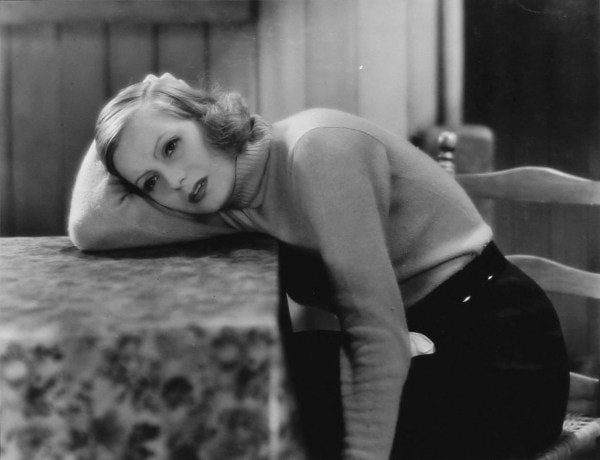
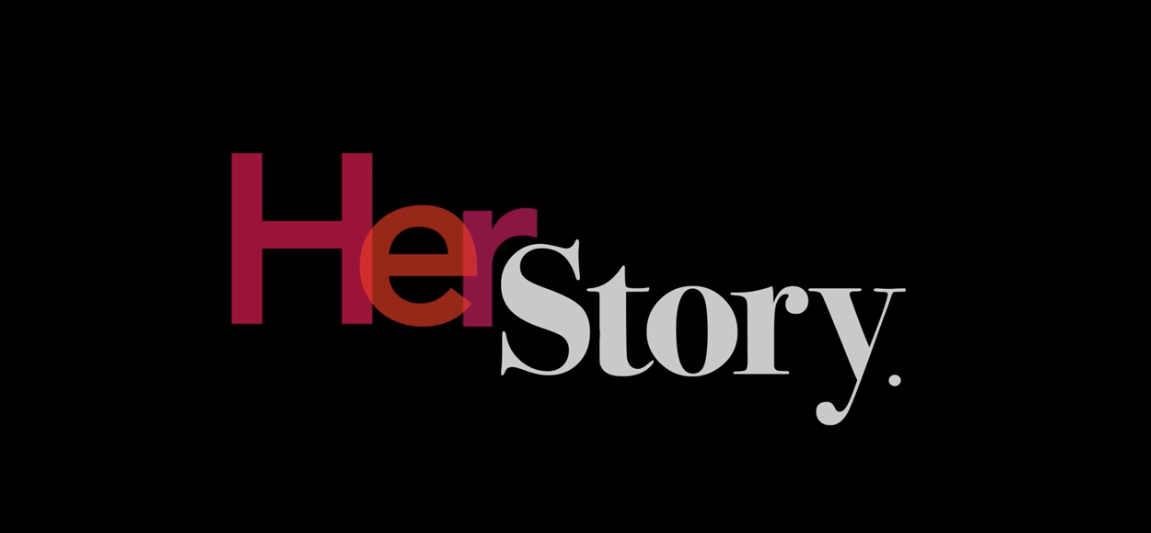
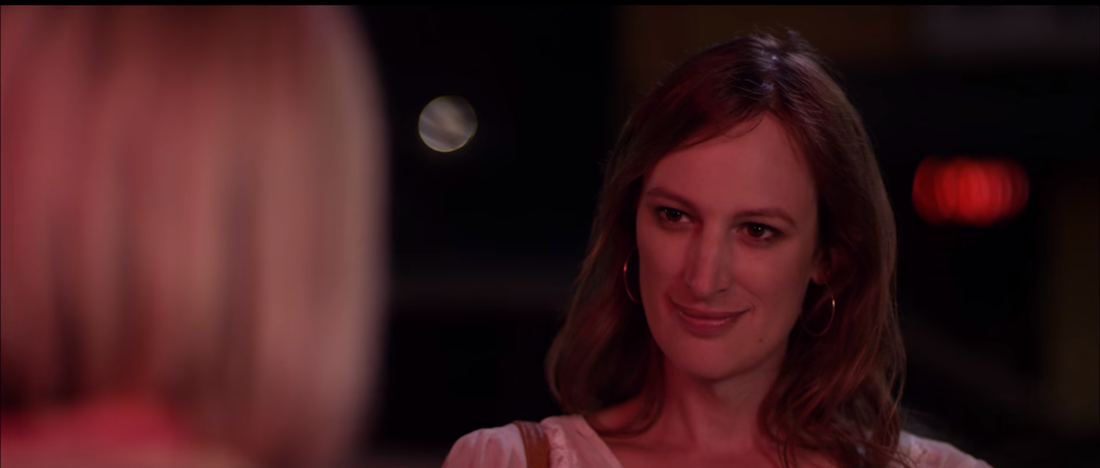
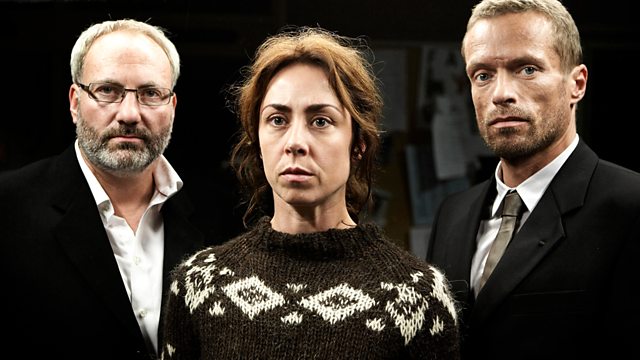
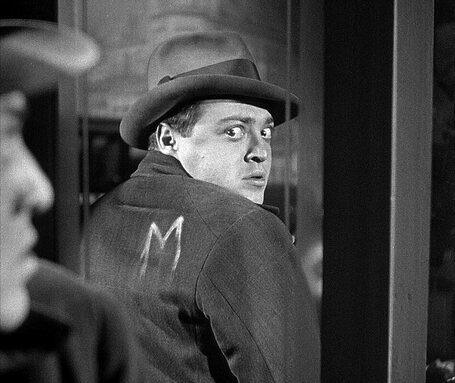

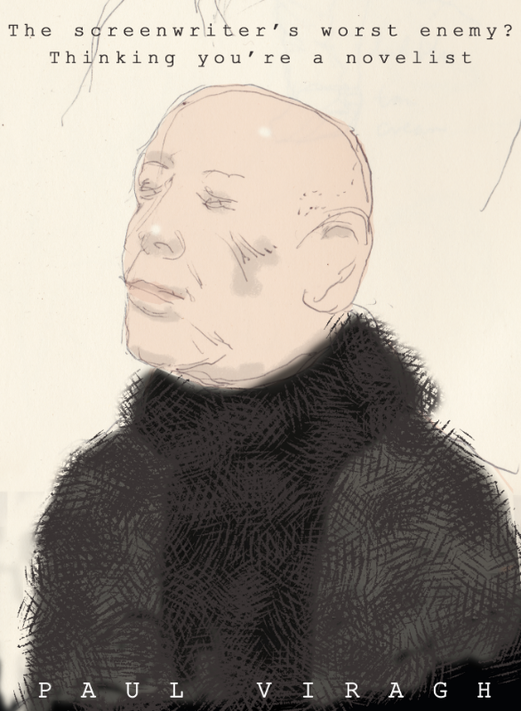
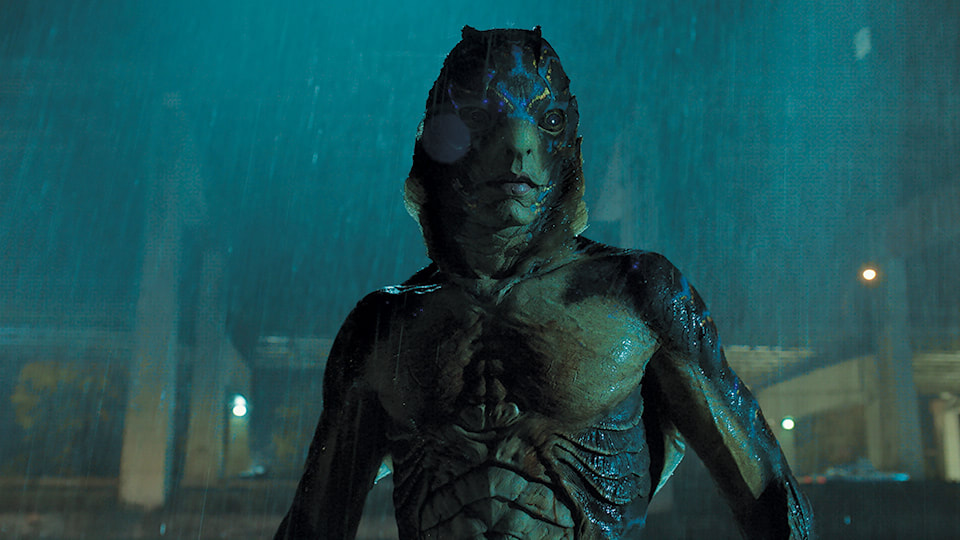
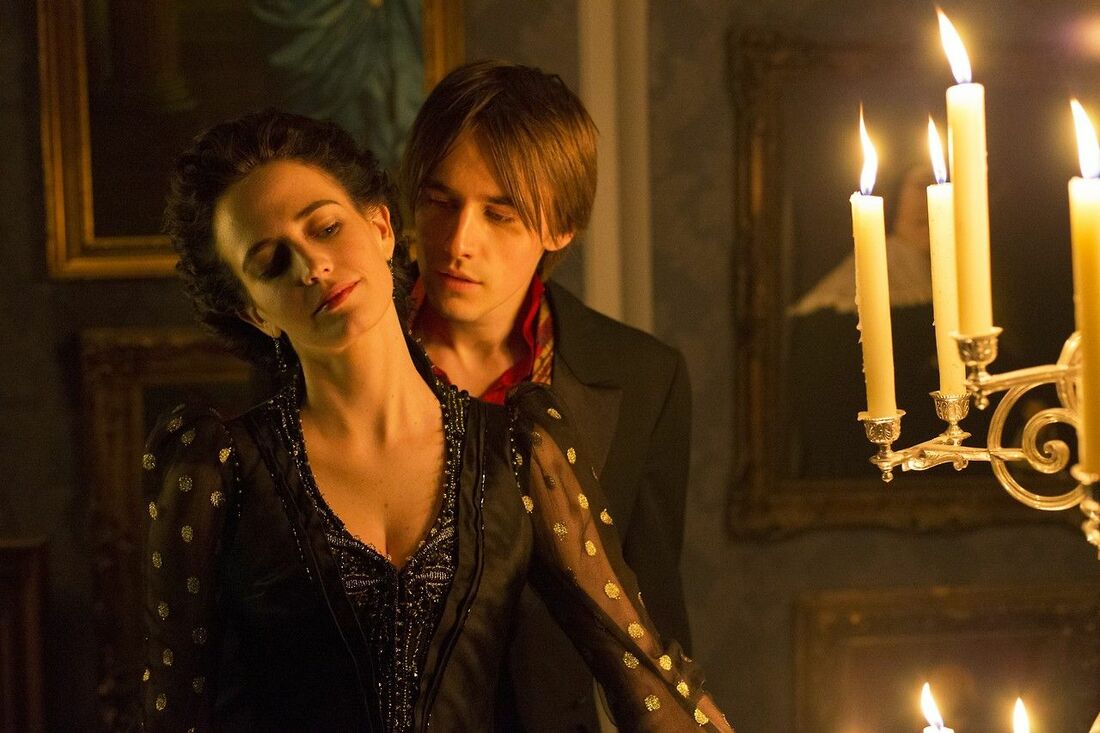
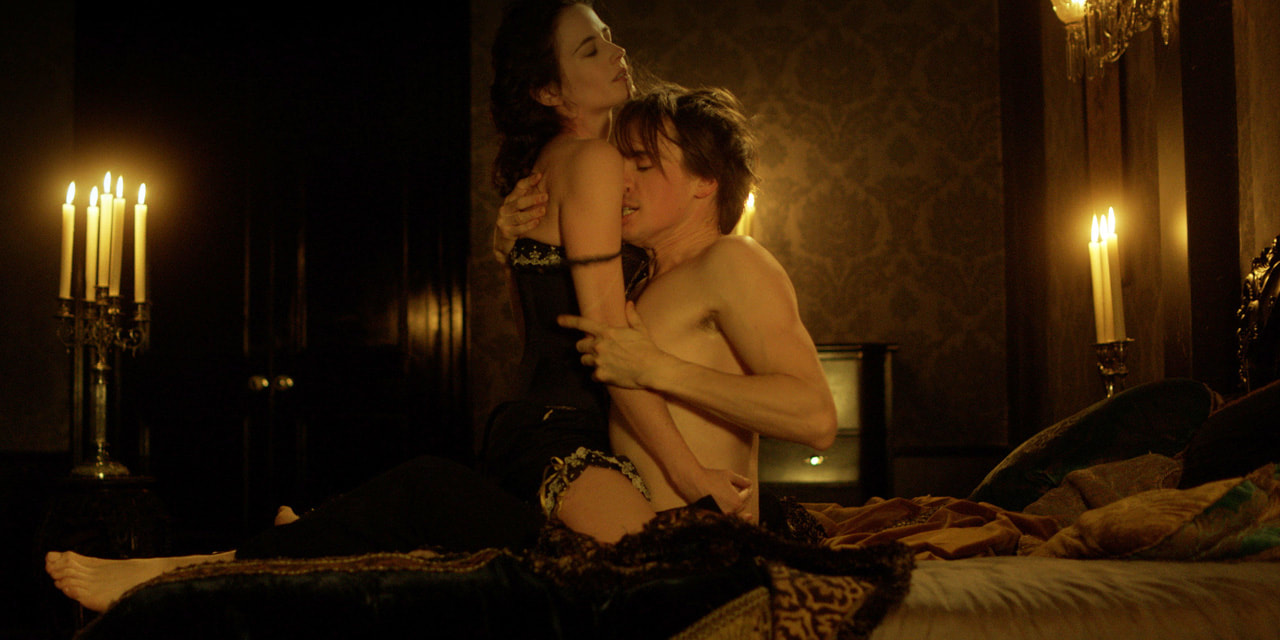
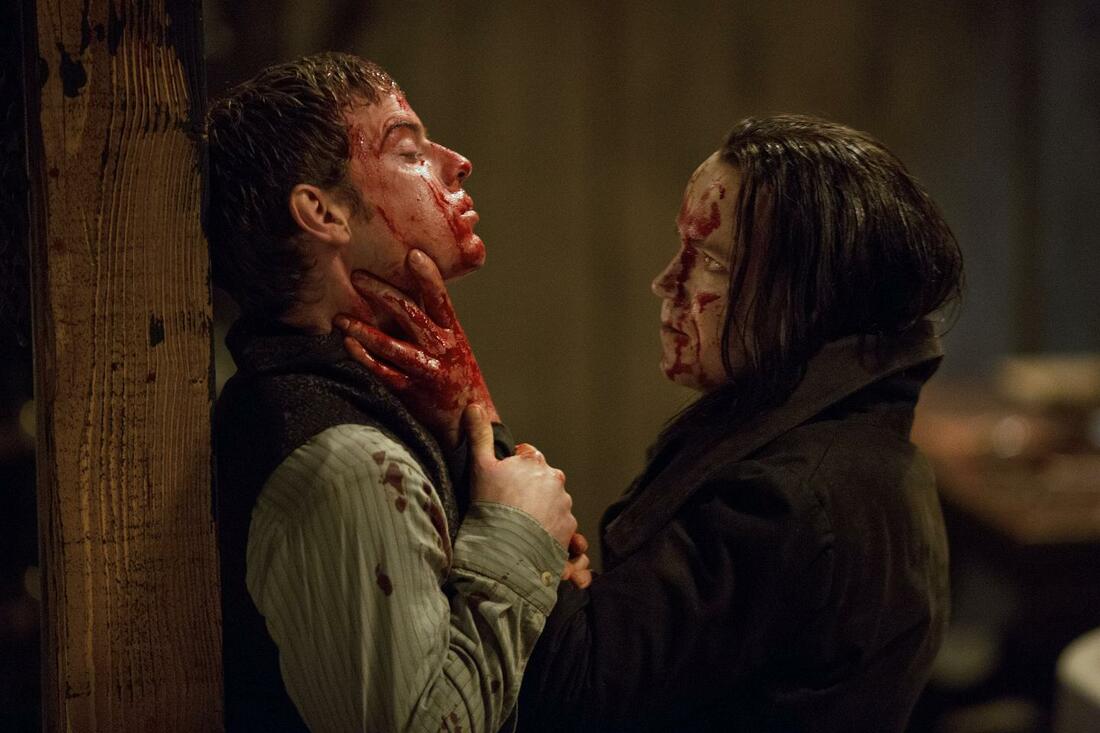
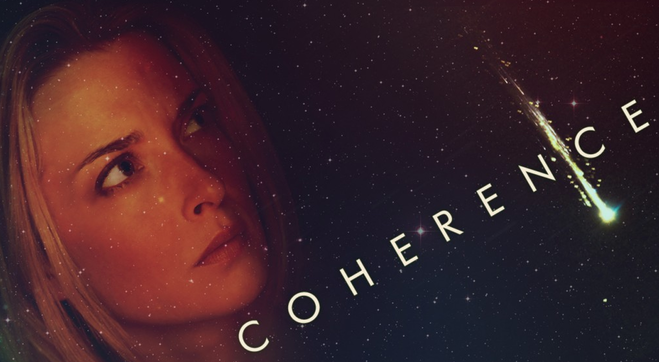
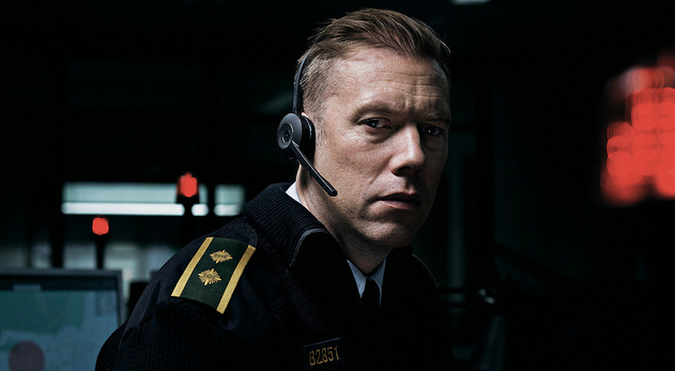
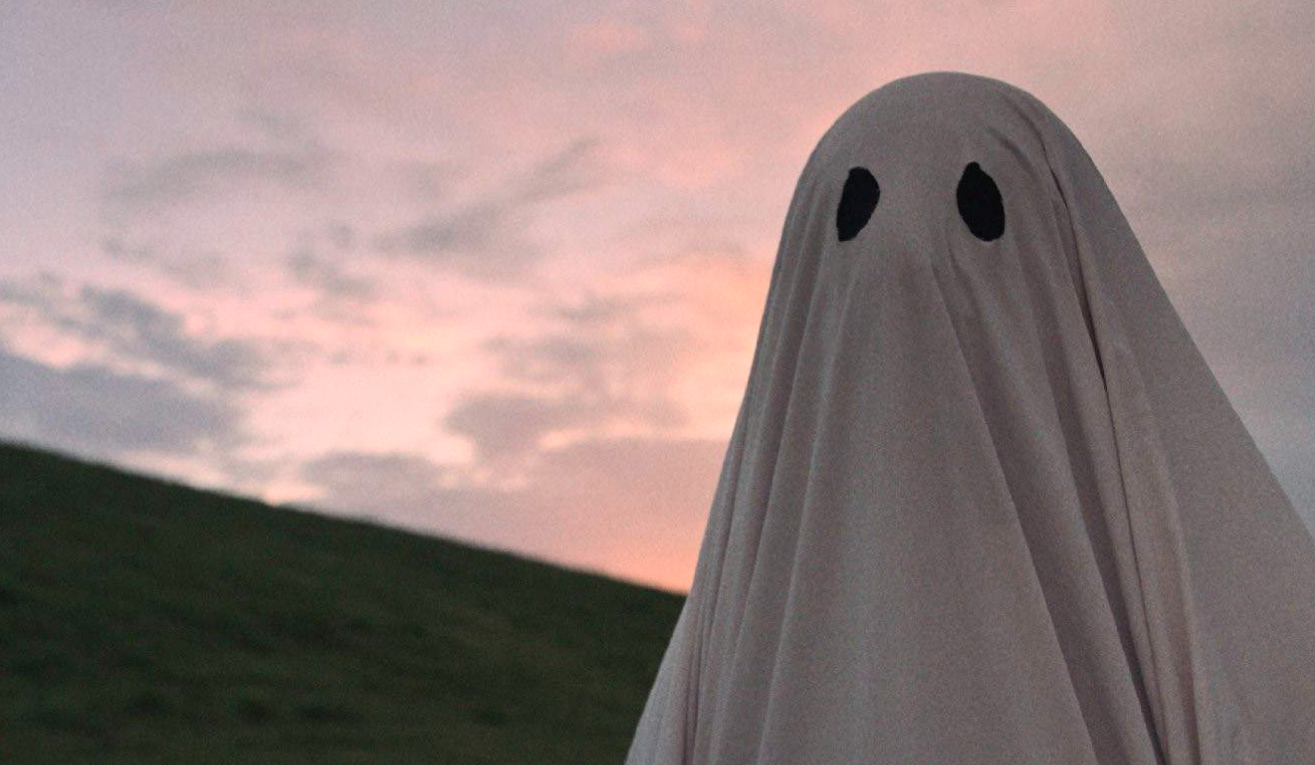
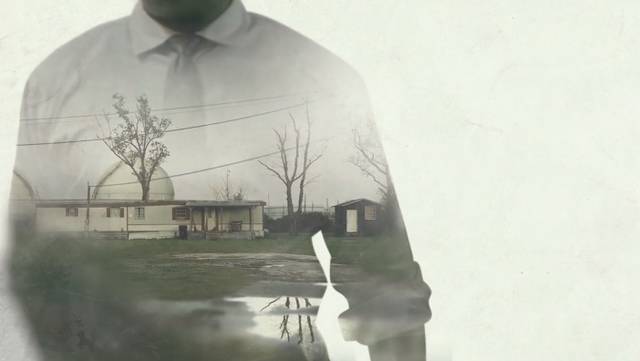
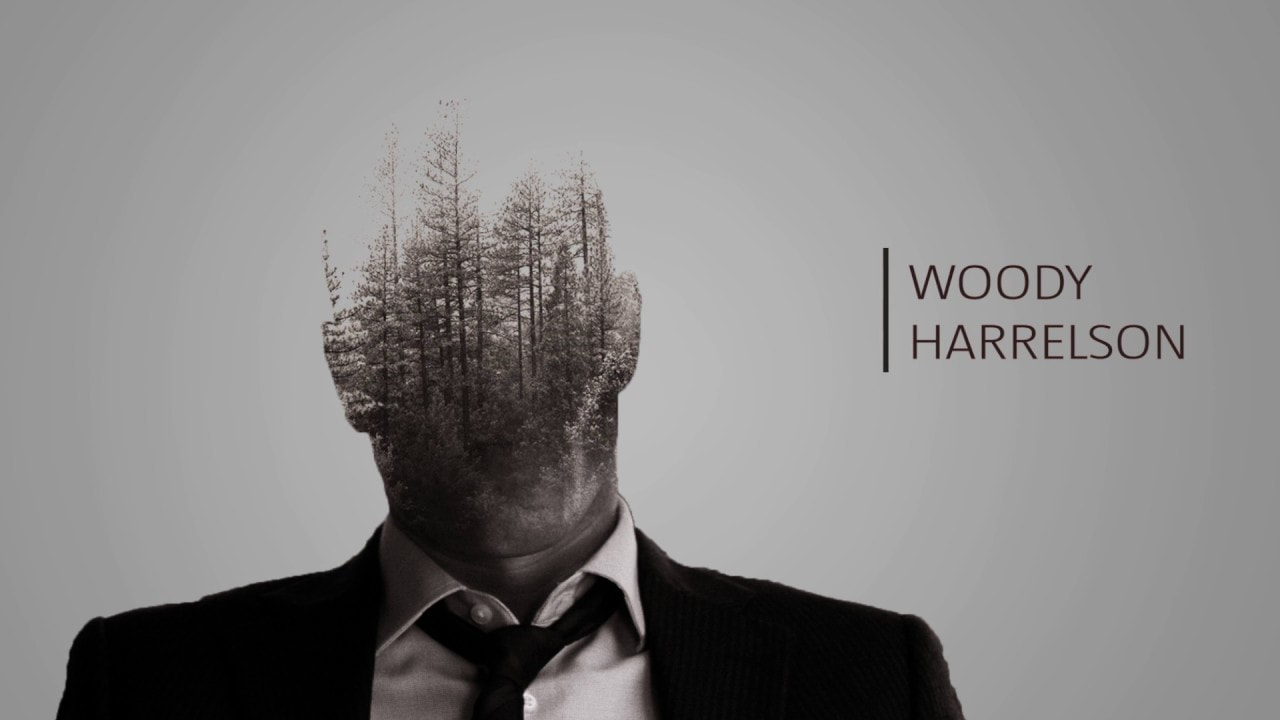
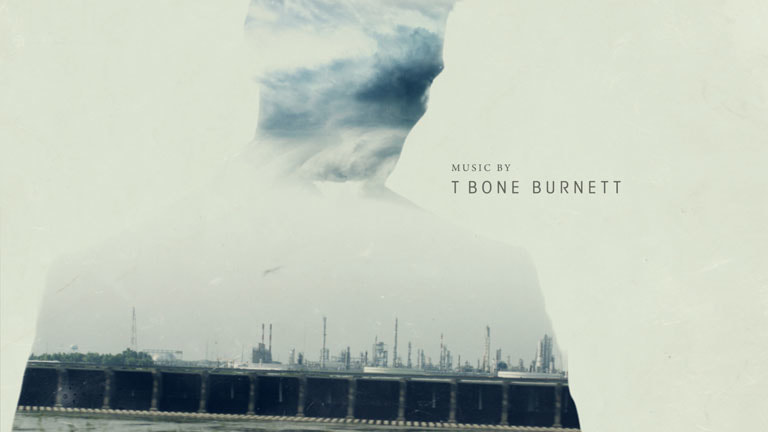
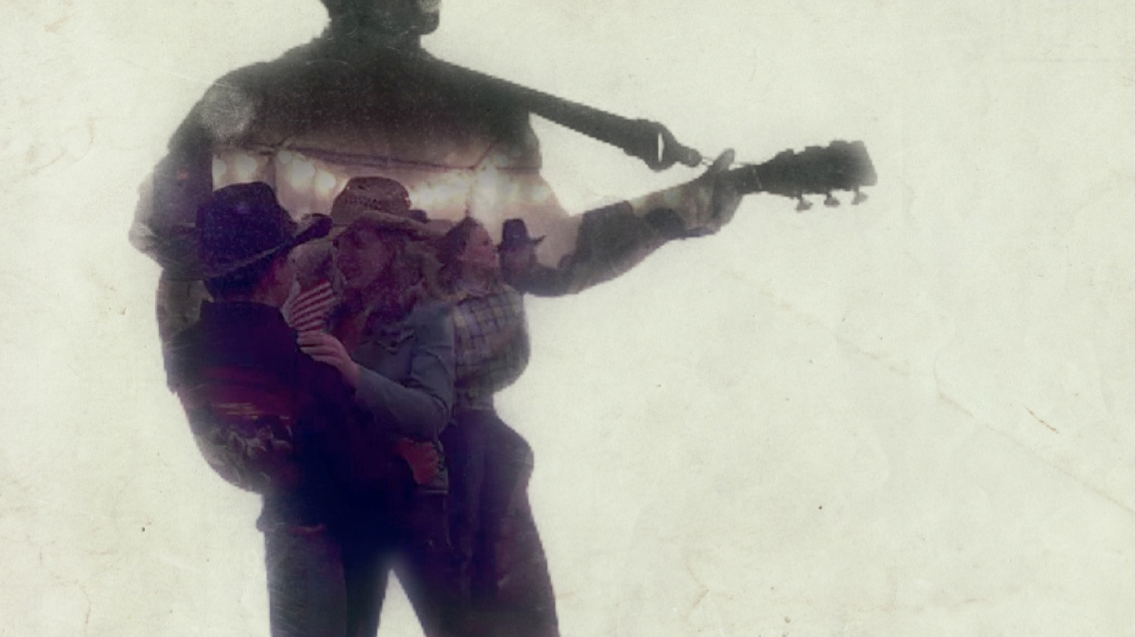

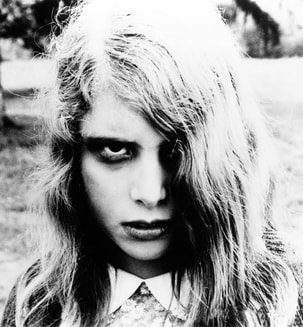
 RSS Feed
RSS Feed


